SAMURAI SWORD 34 - WWII NAVAL KATANA - KUNIMORI

This is a Japanese WWII Naval Katana sword. made by renown sword maker Kunimori.
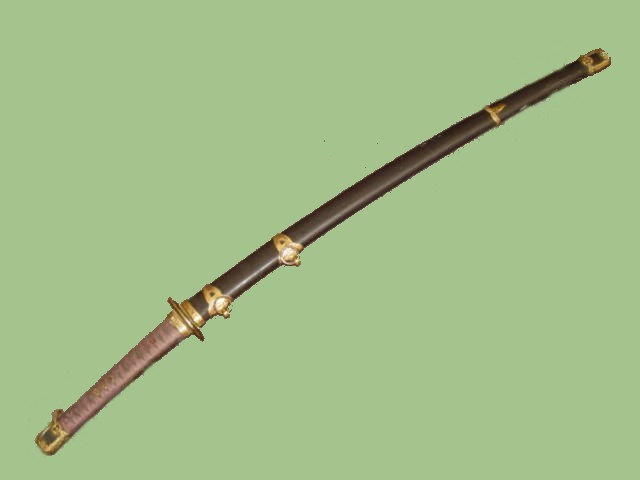
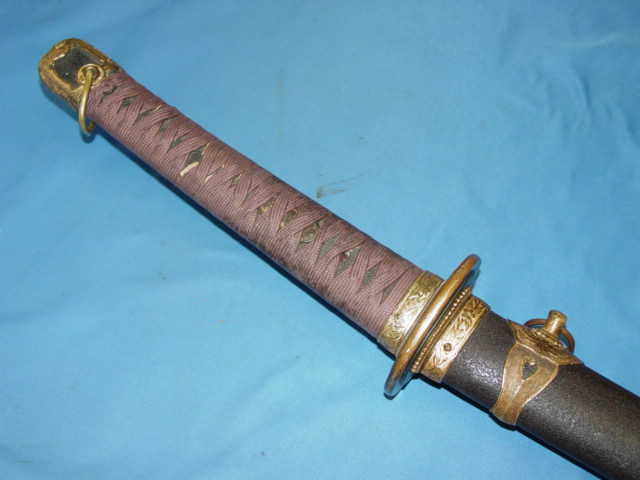
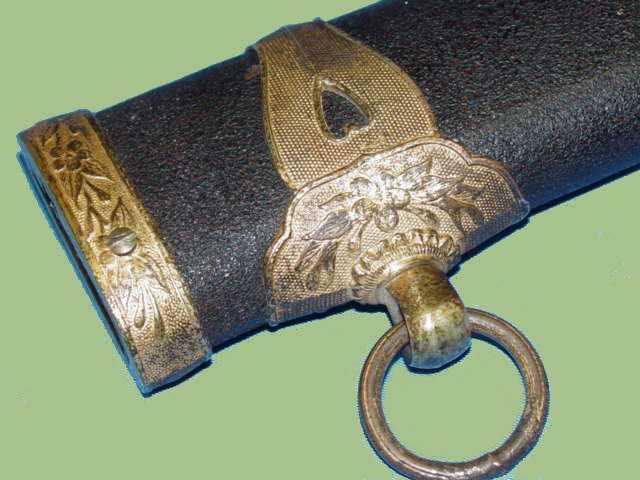
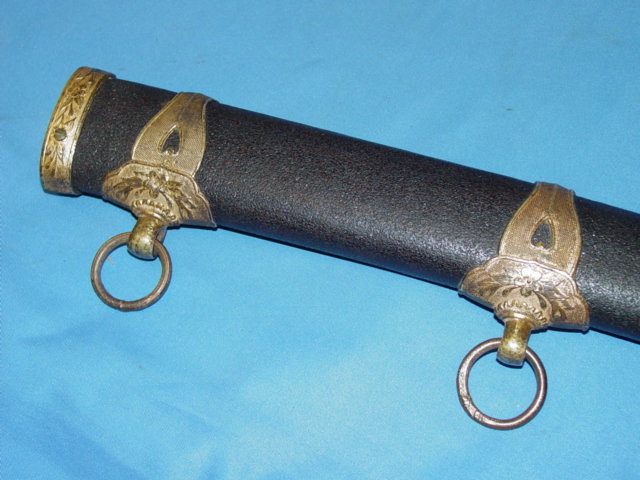
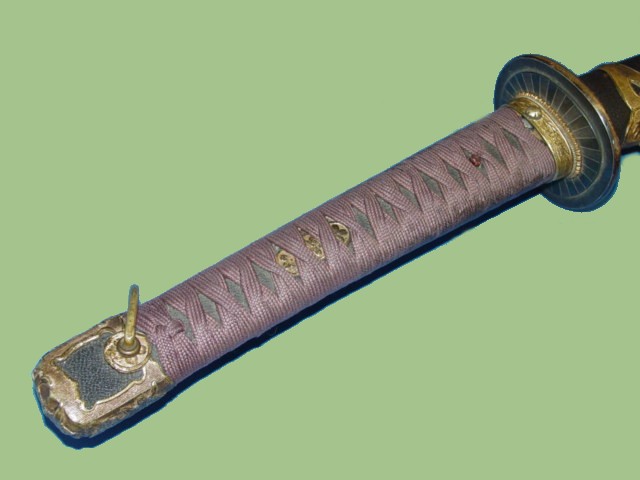
The following pictures show the locking mechanism for the sword. A high level of attention was dedicated to
the construction of this sword. To the point that even the spring has been marked with Kanji symbols.
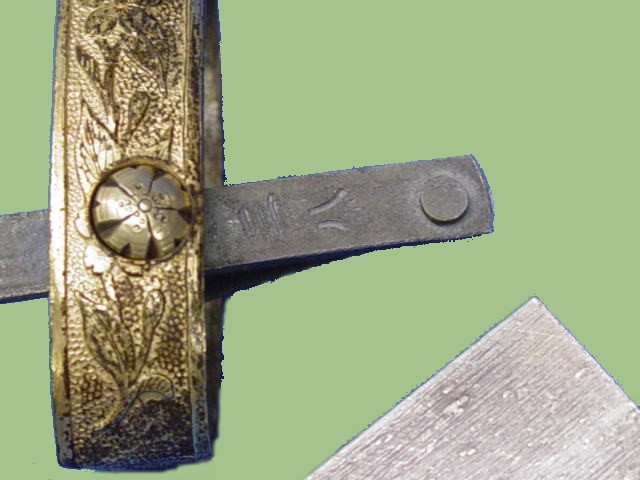
|
This page is a recognition and identification guide for Samurai swords.
Multiple detailed photos of a specific sample are provided. Descriptions point
out clearly defined points that should be noted.
One of the most commonly asked questions is "How much is my Samurai Sword worth?".
A price guide is included here to address this question. The value of the swords is
reviewed over a period of several years. A trend can be observed. The present worth
of the edge weapons in the collector's market is illustrated.
This service is provided free of charge to the visitor/enthusiast courtesy of
MilitaryItems.com,
a company dedicated to the preservation of military history and to providing quality
military antiques and collectibles to museums, institutions and the general public.
|
|
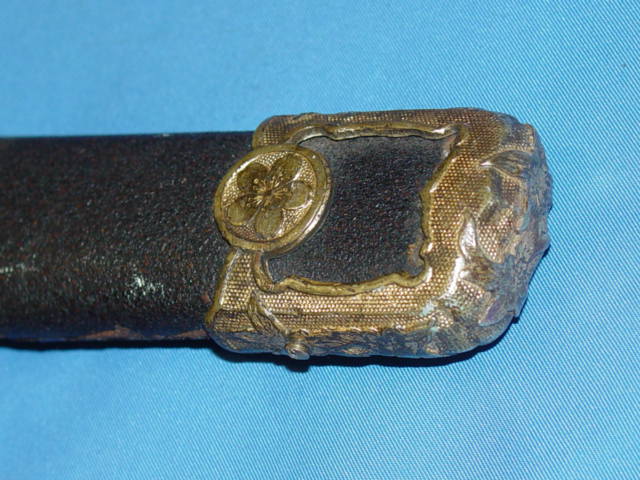
This sword has some of the most complete markings available. As it can be seen on the photo below, even the
locking spring has been marked by the maker. Most of the times this piece is not marked at all.
Another interesting aspect is that the Habaki is made of solid Silver.
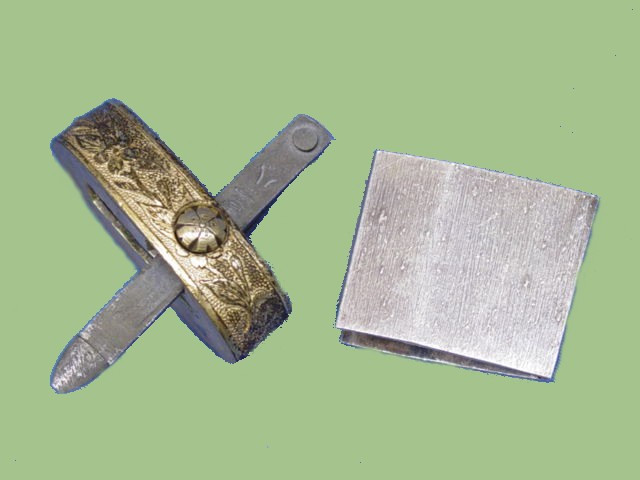
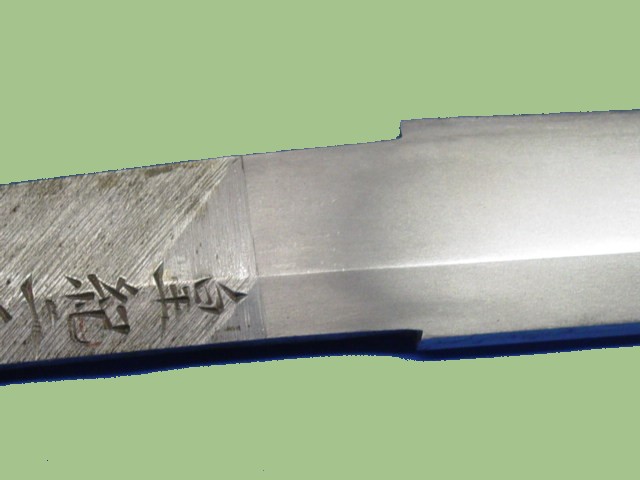
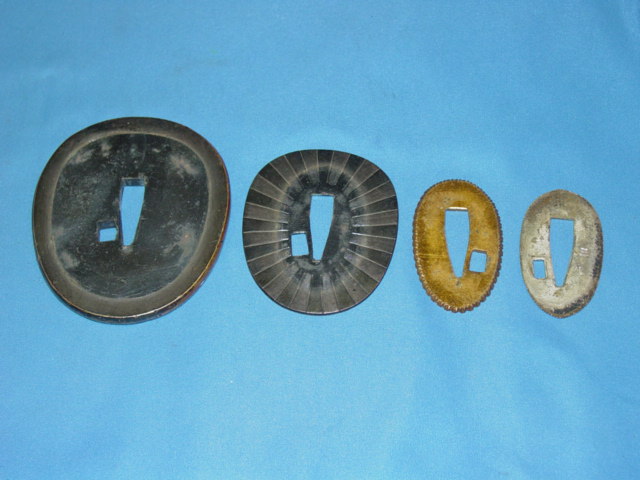
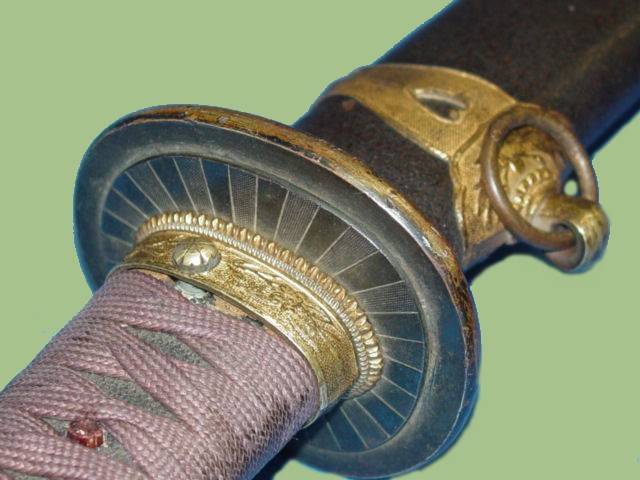
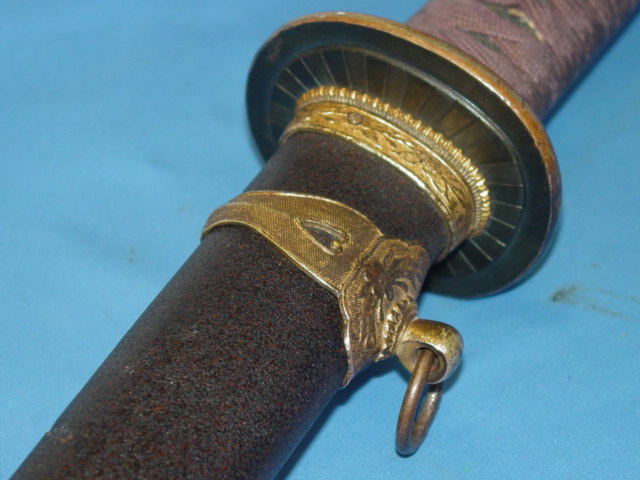
The different parts that secure the Tsuba in place are marked. In some cases arabic numbers are employed
to apply the markings. This example has Kanji (Japanese writing) markings.
After the sword is taken apart. Putting the spacers back in place can be a bit of a challenge. They may
not want to re-seat properly. Tapping the pommel with a rubber hammer can make the fittings fit
properly again.
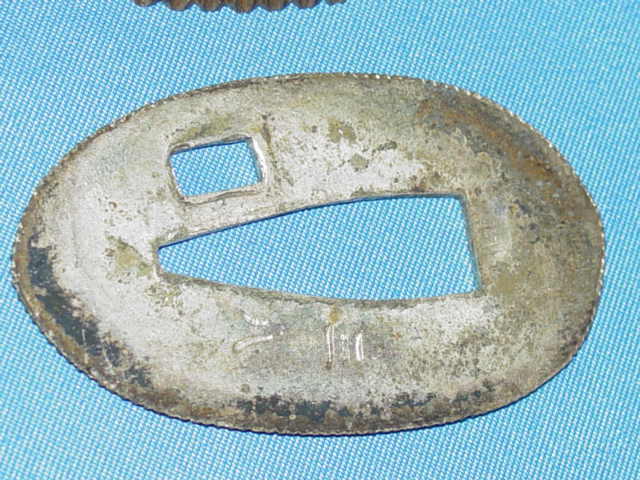
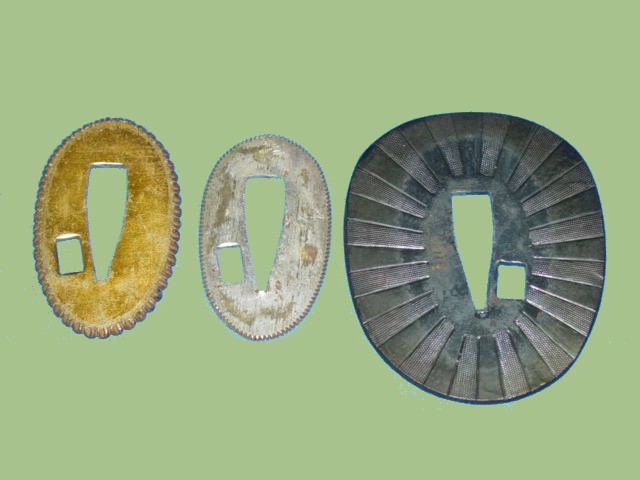
The following photograph provides a side view of how the different washers and Tsuba are mounted on the
sword. Some of the tang markings are clearly visible through the fittings. All parts have a rectangular
hole cut to allow the locking mechanism to pass through.
One common problem when handling the sword by inexperienced individuals is that they force the blade out
without pressing the button to unlock the sword. Forcing the sword can cause damage to the lock. Sometimes
it can break. Always press the button to disengage the lock before pulling the blade out.
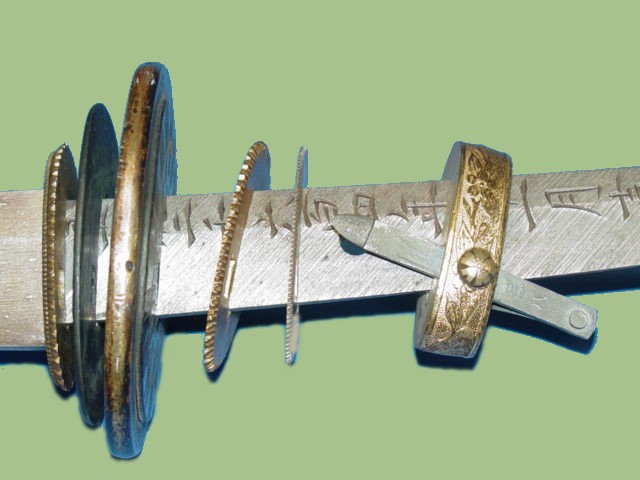
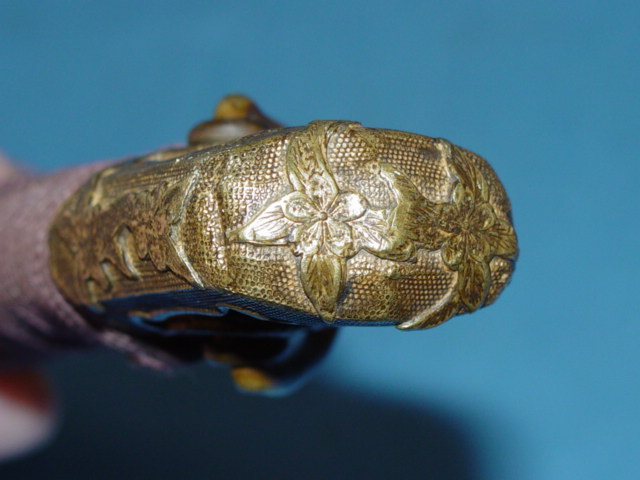
The sword featured here has more markings than normally seen.
One side of the tang has been marked primarily with date related information. The upper section of the inscription
refers to the 2,604th year from the foundation of the empire. It was common for the Japanese to refer to years
in terms where you had to add two numbers to come up with the proper date.
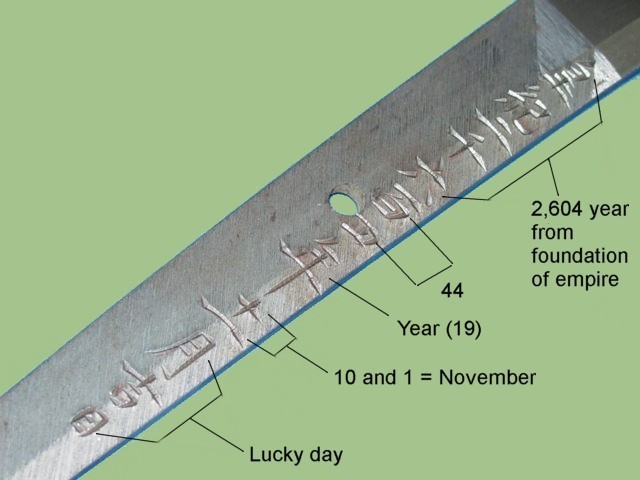
The other side of the tang includes a small saying: "I gladly give my life". Probably a refernce to the willingness
of the soldier to commit to battle until death. The next section of the signature bears the name of the maker.
What is interesting to note is that "Ikansai" was actually the middle name of the maker. However, it appears that
in this case is being used as a first name. His last name was "Kunimori".
The entire set of characters basically states that Kunimori was a resident of Tokyo and he made the sword.
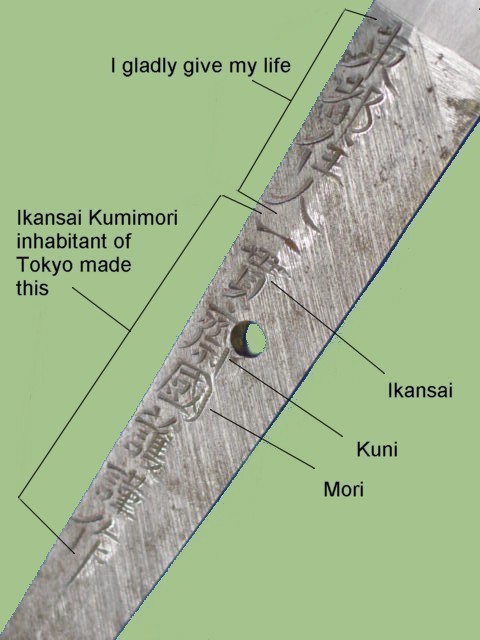
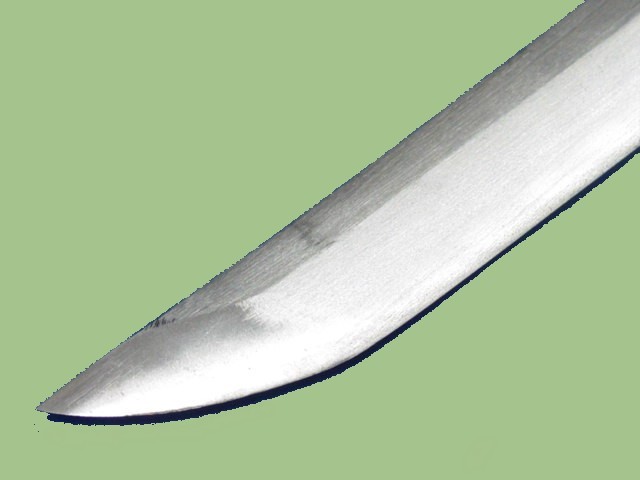
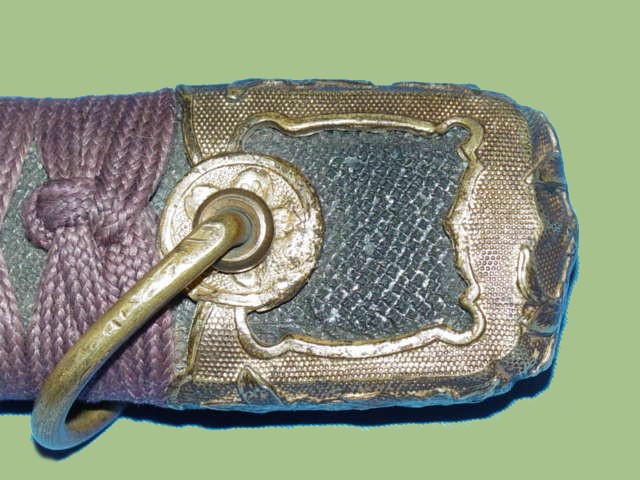
This Samurai Sword may be currently reproduced.
It is becoming more difficult to be able to tell the fake ones from the real ones because
the quality of the reproductions is improving. The collector must become familiarized with
the construction style and materials employed in the manufacturing of this item.
Attention to the details is critical in order to be able to determine the authenticity of
the collectible.
If you have an interest is seeing other Japanese Samurai swords, you can do so by going to our
Japanese Samurai Swords Price Guide
identification guide. Where we cover Samurai swords from all periods.
| 




